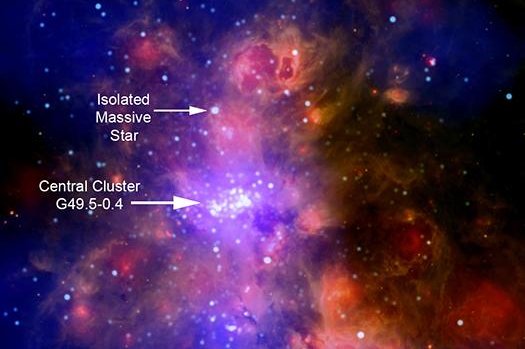July 13 (UPI) -- The Chandra X-ray observatory has identified 600 young stars inside a region of W51, one of the closest giant molecular clouds to Earth.
Astronomers used the Chandra's observations to create a new composite image of the giant molecular cloud.















